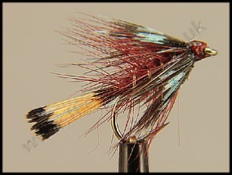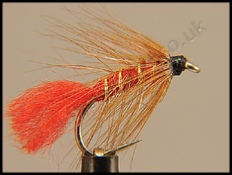EACH PAGE HERE IS AN EXTRACT FROM THE EBOOK.
To Read More
To Read More
Just $18.49
Just $18.49


Fly Fishing Encyclopedia



Fly Fishing Encyclopedia



Fly Fishing Encyclopedia



Fly Fishing Encyclopedia



Fly Fishing Encyclopedia

Another ideal use for the wet fly is when the trout are feeding on pin fry near the top of the water - sometimes it is almost as if it is raining as the fry jump to avoid the hunting trout. A silver or white bodied wet fly, such as the butcher, pulled through the shoal can have a dramatic effect. There is no reason why you cannot put a wet fly on the top and middle droppers with a lure on the point in these circumstances, using a faster retrieve to emulate the escaping fry.
A problem with wet fly fishing in downstream river fishing techniques is drag. The mechanics of casting across the river means that the line will be in contact with faster flowing water in the middle of the stream as well as the slower current on the other side. The faster mid-stream current drags the line downstream leaving the slower moving line on the other side behind. This is the cause of line drag and is explained in more detail in the section on Floating Lines. Briefly, you will need to "mend" the line frequently, lifting the faster moving section off the water and gently flicking it back upstream to keep it moving at the same speed as the slower moving line.
Wet flies are designed to be fished sub-surface, so they tend to be tied slimmer than dry flies because they do not need to hold air to float. We want these flies to sink. They are one of the oldest forms of fly but these days seem to have fallen out of fashion. They can be used either as a reproduction of an actual aquatic insect - called an imitator - or as a general representation of a small fish or vertebrate, using movement as its best quality - called an attractor. As you will read, wet flies have many uses and should still form an important part of every fly fisherman's armoury. One of the main ideas of the imitative wet fly is to simulate a fly in its hatching stage as it moves up through the water column, or they can be made with a wing to simulate a mated fly as it dives to deposit its eggs.
WET FLIES


